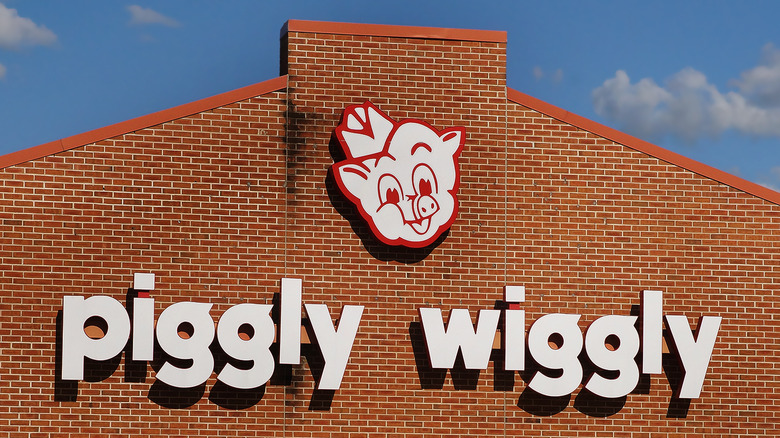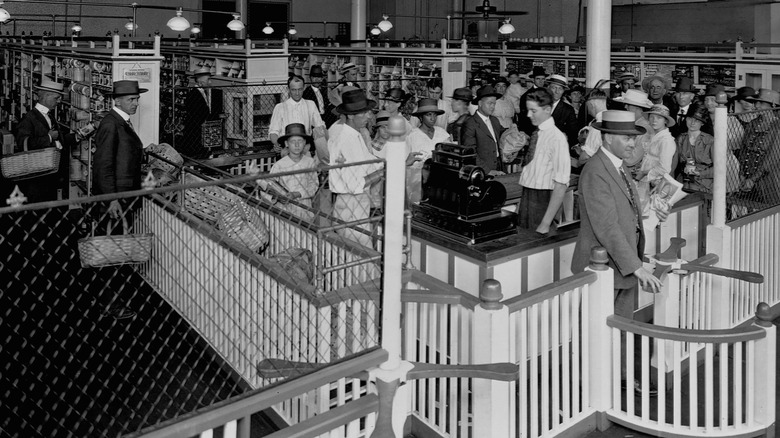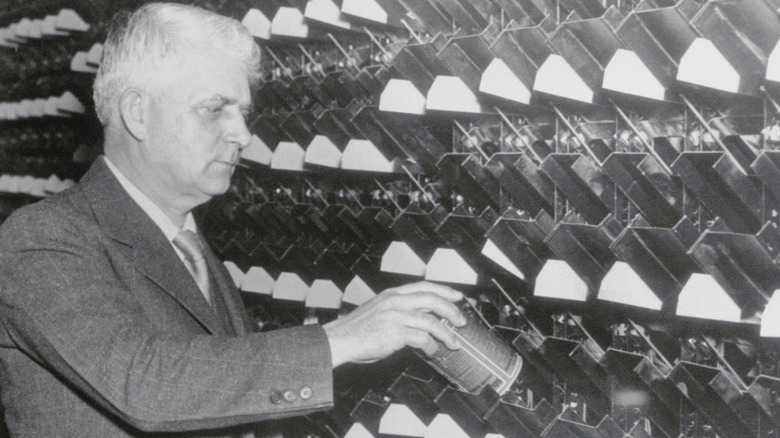How Piggly Wiggly Became The First Modern Grocery Store
Innovations throughout history are often inspired by someone deciding, "There's got to be a better way." And in creating the first modern grocery store, that's how it started for entrepreneur Clarence Saunders. Working in the wholesale food industry in the early years of the 20th century, the savvy salesman didn't care for how things were done, convinced there was a more efficient way to do business.
Grocery shopping at the time offered few choices for the customer, who brought their shopping list into a store where clerks would select the items and wrap them up before sending the shopper on their way. The system was time-consuming for the customer, who had to wait around until a clerk was available to help them, and it was an expensive endeavor for shop owners, who had to hire enough clerks to satisfy demand.
When Saunders launched his first self-service Piggly Wiggly grocery store in Memphis, Tennessee in 1916, history was made. It created a new norm that forever changed the way we buy our food. And his business model for Piggly Wiggly, completely different from his competitors at the time, became the precursor to how we shop today.
How it worked
Customers at Piggly Wiggly experienced grocery shopping as they never had before. Turnstiles at the entrance led them to a continuous path through the store, flanked by open shelves of merchandise to choose from. After reaching the cash register and paying for their purchases, another turnstile brought them smoothly out to the exit. While uniformed employees were on hand to stock the shelves, it was up to the customer to choose their own products.
In designing Piggly Wiggly, Saunders thought about how people shopped, and put impulse items, such as candy, close to the checkout. The continuous path through the store controlled traffic and kept people moving toward the cash register, all while being tempted by the products available to them that they were forced to see as they made their way through the store. And with so many choices available, branding became important as products needed to stand out somehow to attract shoppers' attention. Piggly Wiggly not only redefined how people shopped, but it changed their perceptions of the merchandise.
Among the innovations Piggly Wiggly offered were wooden shopping baskets to carry items in, and price-marked merchandise to make selection easier. The cost-saving elimination of clerks to do the shopping was passed on in savings to customers, who flocked to the store where prices were cheaper and they could make their own choices.
What happened next
Within a year of opening, there were nine Piggly Wiggly locations in the Memphis area, and Saunders secured patents for the store's design, price tags on merchandise, and printed cash register receipts. Hundreds of franchises were launched, and by 1923, the chain included 1,268 stores and was traded on the New York Stock Exchange.
Clarence Saunders never gave a definitive answer as to why he chose the name "Piggly Wiggly," but his reluctance to explain seems to be a marketing move in itself. The company's website notes that Saunders told someone he chose the name for his business "so people will ask that very question."
Throughout the 1920s, the self-service business model became the standard, with King Kullen opening its first supermarket in Queens, New York in 1930. But by then, Saunders had already lost it all, resigning from his company and filing for bankruptcy after a series of bad business decisions. He didn't give up his entrepreneurial activities, however, and later introduced two new concepts for grocery shopping. Both had curiously memorable (and conversation-starting) names: Keedoozle, a fully automated grocery market that was based on vending machines, and Foodelectric, an early predecessor to self-checkout. Ultimately, Keedoozle wasn't profitable, and Foodelectric never opened.


